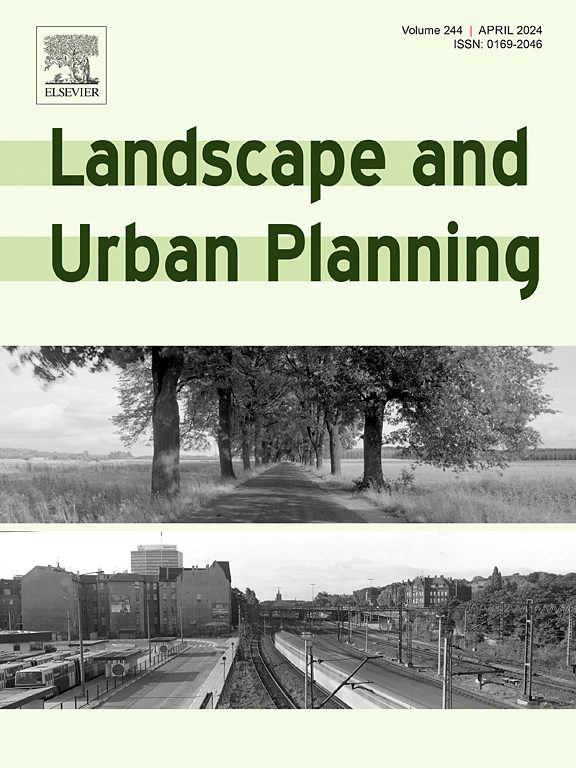The role of greenness and road traffic noise for psychological restoration in everyday environments. A participatory mapping approach
IF 7.9
1区 环境科学与生态学
Q1 ECOLOGY
引用次数: 0
Abstract
Greenness and noise are important environmental determinants of human health. The rapid urbanization and population growth have intensified the densification of urban environments, escalating traffic noise and the depletion of green spaces.
Our study aims to explore the role of greenness as a facilitator and noise exposure as an impediment to psychological restoration in people’s daily environments, examining the interplay between environmental factors, individual perceptions, and personal traits.
We employ a conceptual model where the effects of road traffic noise and greenness on restoration are mediated by perceived landscape factors and moderated by personal traits. We collected data through an online participatory survey of about 1500 Swiss respondents. Respondents were asked to indicate the level of restoration they obtained from looking out of their window at home and from their last restorative outdoor activity. Our analysis combines biophysical and acoustical georeferenced data with perceived survey data and uses multiple mediation analysis technics, i.e., structural equation modelling.
Results indicate that greenness and traffic noise exposure are only marginally linked to psychological restoration outcomes. However, they are strongly associated with perceived landscape aspects, such as the feeling of being in nature and noise annoyance, which in turn are linked to these outcomes. Personal traits, including connectedness with nature and stress levels, also play a critical role in shaping restoration outcomes.
Our study highlights the complex dynamics between environmental factors, personal perceptions, and restoration outcomes, emphasizing the pivotal role of perceived feeling of being in nature and personal traits in psychological restoration.

求助全文
约1分钟内获得全文
求助全文
来源期刊

Landscape and Urban Planning
环境科学-生态学
CiteScore
15.20
自引率
6.60%
发文量
232
审稿时长
6 months
期刊介绍:
Landscape and Urban Planning is an international journal that aims to enhance our understanding of landscapes and promote sustainable solutions for landscape change. The journal focuses on landscapes as complex social-ecological systems that encompass various spatial and temporal dimensions. These landscapes possess aesthetic, natural, and cultural qualities that are valued by individuals in different ways, leading to actions that alter the landscape. With increasing urbanization and the need for ecological and cultural sensitivity at various scales, a multidisciplinary approach is necessary to comprehend and align social and ecological values for landscape sustainability. The journal believes that combining landscape science with planning and design can yield positive outcomes for both people and nature.
 求助内容:
求助内容: 应助结果提醒方式:
应助结果提醒方式:


